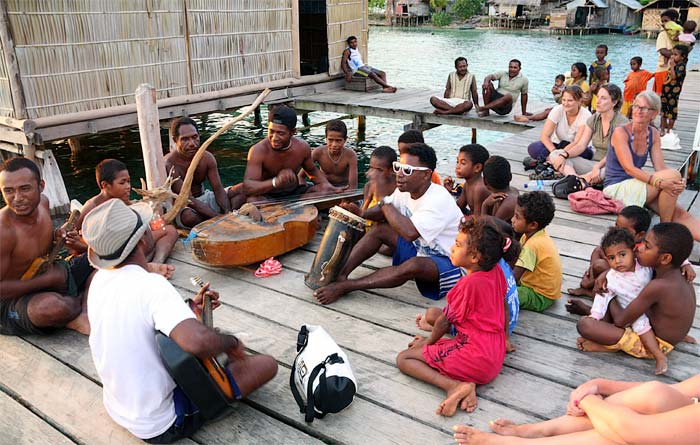Please help! If you’ve visited Raja Ampat we want to hear from you…
The Asosiasi Usaha Homestay Lokal of Kabupaten Raja Ampat (the Raja Ampat Local Homestay Business Association) is committed to making your stay as enjoyable and rewarding as possible and would really appreciate your feedback. If you’ve stayed at a homestay, travelled with a local guide or spent time on a liveaboard or at a resort, please take a few moments to respond to the Raja Ampat Homestay survey.
Sharing your experience, impressions and suggestions will help Papuan homestay owners, diving and tour guides improve the services and facilities they offer their guests and will contribute to the success of an initiative designed to provide sustainable incomes for people living in the Raja Ampat Marine Protected Areas. The fledgling community eco-tourism industry in Raja Ampat is the foundation of the plan to protect the marine environment of the Bird’s Head Seascape – your input is sought to help make it as good as it can be.
Anonymised and aggregated survey data is also supplied to the Raja Ampat regency government to help them understand what’s truly important to visitors to the islands so they can formulate appropriate planning policy. Your input really can make a difference!
The survey should only take around ten minutes to complete. It was developed on behalf of the Raja Ampat Homestay Association with assistance from Seventy Three Pte Ltd, and was funded by the Walton Foundation Parallel Initiative for the Bird’s Head Seascape Marine Protected Area. If you have any questions about the survey, the Parallel Initiative project or about the Homestay Association, please feel free to contact the survey’s publishers.
Stay Raja Ampat also welcomes feedback, comments and updates to the information published on this website – if you’re interested in contributing, please refer to this page for details.
